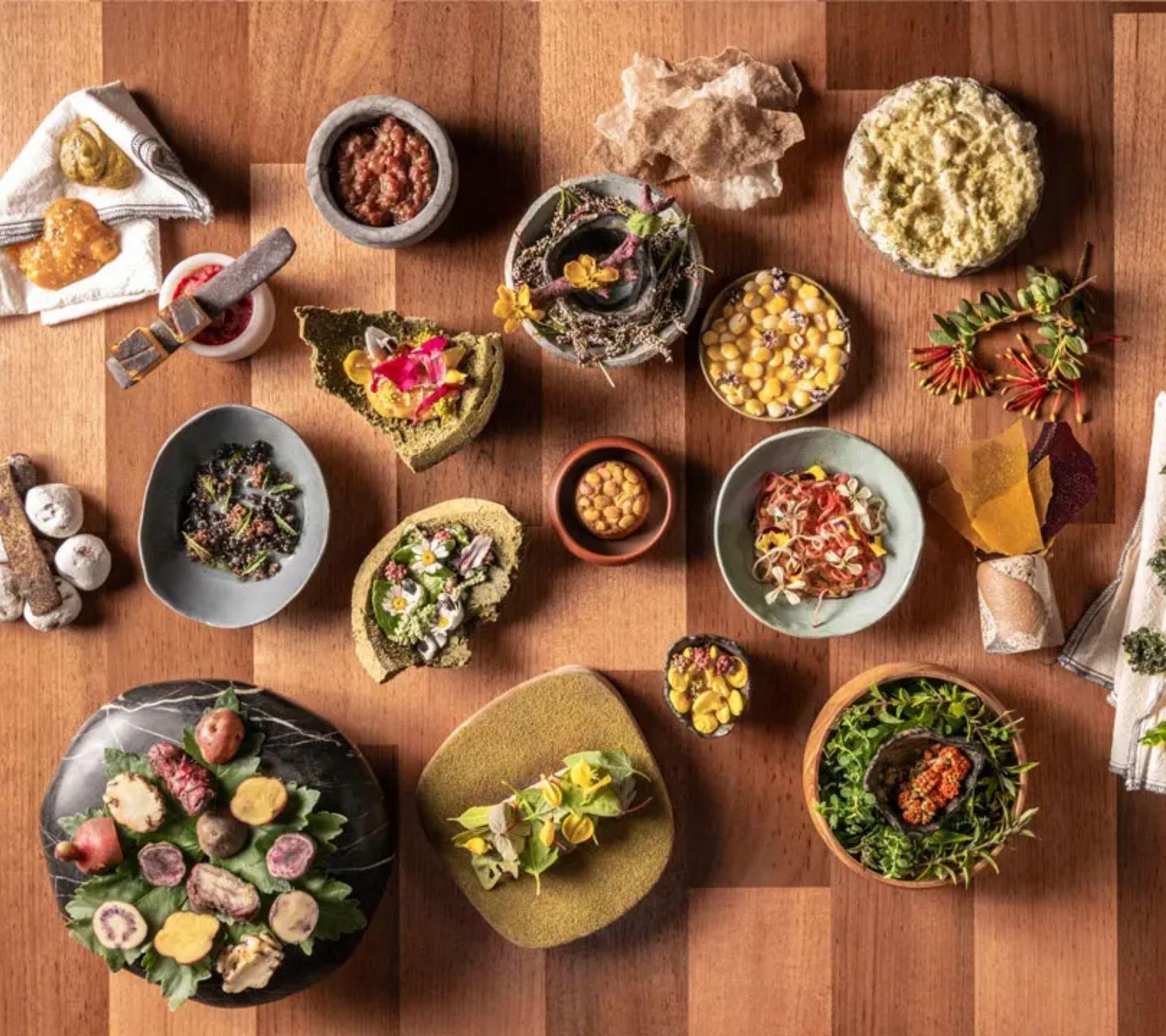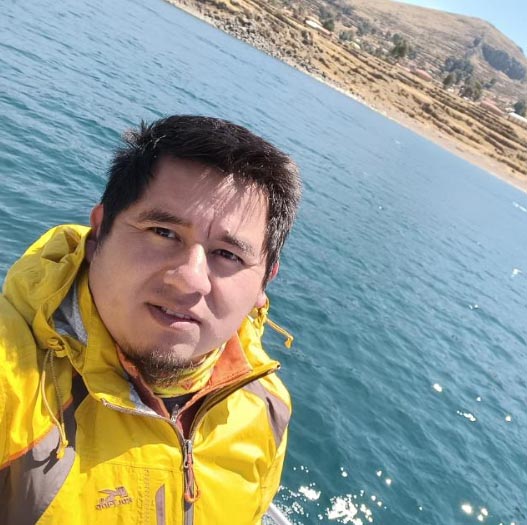Mil Centro is an architectural project that seeks to recover and transform ancestral techniques and the use of natural elements that shaped the lives of indigenous peoples in Peru. It thus highlights an architectural vision based on a direct relationship with the natural, material, and cultural environment it seeks to intervene.
The restaurant and gastronomic research center is under the direction of chef Virgilio Martínez. It is located on the edge of the Moray Archaeological Complex, at 3,680 meters above sea level, 53 km from the city of Cusco, near the rural communities of Misminay and Kaccllarakay.
Visitors to Mil can appreciate the Andean landscape and integrate into its geography and ecosystems through the materials and techniques used in its construction. The roof, hand-woven with ichu fiber, uses a technique dating back to the time of the Incas and a type of grass native to the Andes in South America.
On the exterior facades, a construction system based on mixing earth with resins from cacti was experimented with. This resin waterproofs the soil and protects it from rain erosion. Thanks to this treatment, the exterior walls blend in with the natural environment by having the same color as the valley soil.
For the interior walls, different types of soil were collected from the surrounding area and applied to the rooms. Subtle variations of whites and grays predominated, reflecting the diversity of tones and types of soil found in a single location.
The restaurant's entrance staircase was designed with stone blocks worked by local artisans. The steps gradually transform into small terraces planted with native plants, referencing the Moray complex, believed to have served the Incas as an agricultural research center.
Furthermore, the project sought to maintain harmony with the area's botanical landscape and integrate agricultural and landscaping processes into the restaurant's dining experience. Moray is surrounded by vegetable gardens, tended by neighboring communities, where a wide variety of crops are grown. Inside the restaurant, the spaces are organized around a central stone courtyard and an interior garden planted with native species, giving special prominence to the queñua tree.
Mil's architecture provides a connection to the local communities and continues the historical legacy of their traditions. There is a close relationship between the materials, climate, altitude, history, and artisanal traditions of each location. With Mil, the studio understands that this connection is not limited to a symbolic level: by using it as a guide, they were able to achieve concrete results such as reducing the impact on conservation areas and demonstrating that the natural materials of the site are more sustainable than those predominant in modern Cusco buildings.
The Soul of MIL: Mater Iniciativa
Understanding that MIL is much more than a restaurant, to get to the bottom of its essence, one must first go through Mater Iniciativa. A multidisciplinary gastronomic research project led by Malena Martínez, a doctor in medicine and Virgilio's sister. Mater was born after Virgilio decided to work in the kitchen of Central, his restaurant in Lima, with culinary ecosystems of different altitudes. This generated the need to know them thoroughly in order to discover foods and assess their possibilities within his creative framework. Malena and her team are in charge of traveling Peru inch by inch to catalog everything, and they physically locate their work laboratory at MIL.
“We organize botanical routes, recover tubers and vegetables at risk of extinction, and carry out genetic crossbreeding to achieve more nutritious foods, which the kitchen team then uses. We generate content for the restaurants. We are located in a poor region, but incredibly rich in plant genetic resources,” explains Malena. After an exhaustive analysis, they assess every element, whether it's a cereal or an ancestral technique; it encompasses gastronomy, agriculture, anthropology, archaeology... culture, in short. The work of recent years (MIL opened to the public in March 2020 and then closed due to the pandemic, but Mater predates it) has been published in the product catalog and in a beautiful book also titled MIL.
A unique and authentic experience
Once everything is put together, they decide to share it with diners. In Virgilio's words, MIL is "an interpretation center that brings together art, science, and cuisine." That's why you come not only to eat, but also to experience the power of the land, its food, and its people. And to learn how much gastronomy can generate if you think in the plural. The long shadow of this fascinating project extends beyond agriculture and livestock. It encompasses wild herbs, endemic plants, forgotten production processes such as hand-dyeing and weaving of unique pieces, pottery… Everything here has been produced here. Diners have the opportunity to speak not only with the scientists in charge of each area, but also with members of the communities that are part of MIL.
“This project has given us hope,” Cleto explains. “Our children no longer go to the city; they stay here to work the fields, as our people have always done, and it's all thanks to Mr. Virgilio and Mrs. Malena. We never imagined this could happen.” From the use of cacao and other theobromas to the long list of infused, fermented, and distilled beverages, the MIL universe continues to expand. “We would need another laboratory in the jungle to complete the research,” Virgilio explains, “but it's not that easy. That terrain is even more complicated, communications, supplies…” Just another dream of a dreamer who never gives up.
The spirit of MIL—that of Virgilio, Pía, and Malena—extends to the rest of the group's restaurants. Kjolle takes its name from a yellow-flowered plant endemic to the area. Produce grown in the Andes arrives in the kitchen, where Pía León works with her team.
They also end up in the kitchen at Central and on the large table full of foods, many of them unknown, which serves to explain to diners the processes of this new way of understanding gastronomy. The work they've done with cacao is fabulous, not only selecting but also giving gastronomic use to all parts of the cob: the beans, the mucilage, the husks… surprising bites, sweet or savory, that speak of a whole world to explore.
Unprecedented cuisine, unknown pantry
Ferran Adrià said that the next gastronomic revolution would come from South America, probably the Amazon, and he wasn't wrong. Peru's diverse ecosystems are so rich and varied that it's difficult to find familiar flavors on MIL's menu. Those who think they'll be tasting Peruvian dishes are mistaken. What they find is the fruit of Virgilio Martínez's imagination. Signature cuisine with a capital A that has few references because it emerges from the exploration of the new. The present emerges from the convergence of past and future. The same thing happens at Central and Kjolle. A circle that expands as it closes.






